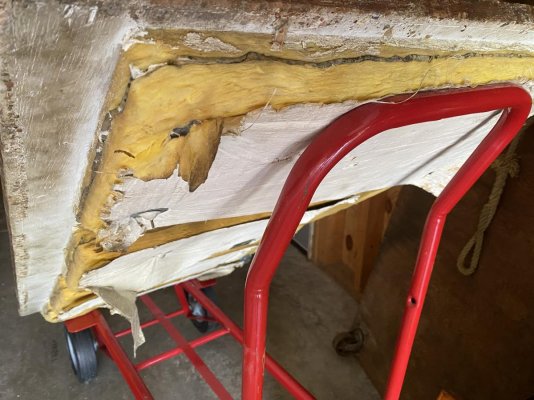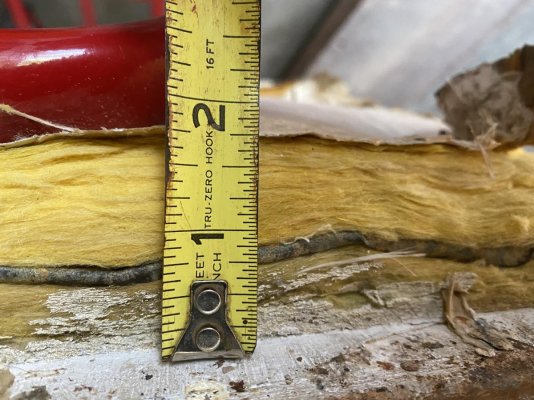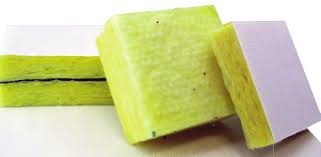albinalaska
Veteran Member
- Joined
- Jun 6, 2020
- Messages
- 94
- Location
- USA
- Vessel Name
- Sea Gypsy
- Vessel Make
- 1979 Albin Trawler 36'
Howdy gang!
Im looking for some advice on the insulation we have on an engine room hatch of our Albin Trawler we just brought up to Alaska from Seattle. I’m curious to see if anyone out there with an older boat or experience recognizes what type of insulation this may be or knows anything about it.
This old stuff probably hasn’t been manufactured in years but we are researching a comparable replacement for sound proofing with something new on the market.
There seems to be a half inch layer of the yellow stuff then a pliable though rigid thin layer and then another inch of yellow.
Appreciate it!
Im looking for some advice on the insulation we have on an engine room hatch of our Albin Trawler we just brought up to Alaska from Seattle. I’m curious to see if anyone out there with an older boat or experience recognizes what type of insulation this may be or knows anything about it.
This old stuff probably hasn’t been manufactured in years but we are researching a comparable replacement for sound proofing with something new on the market.
There seems to be a half inch layer of the yellow stuff then a pliable though rigid thin layer and then another inch of yellow.
Appreciate it!




